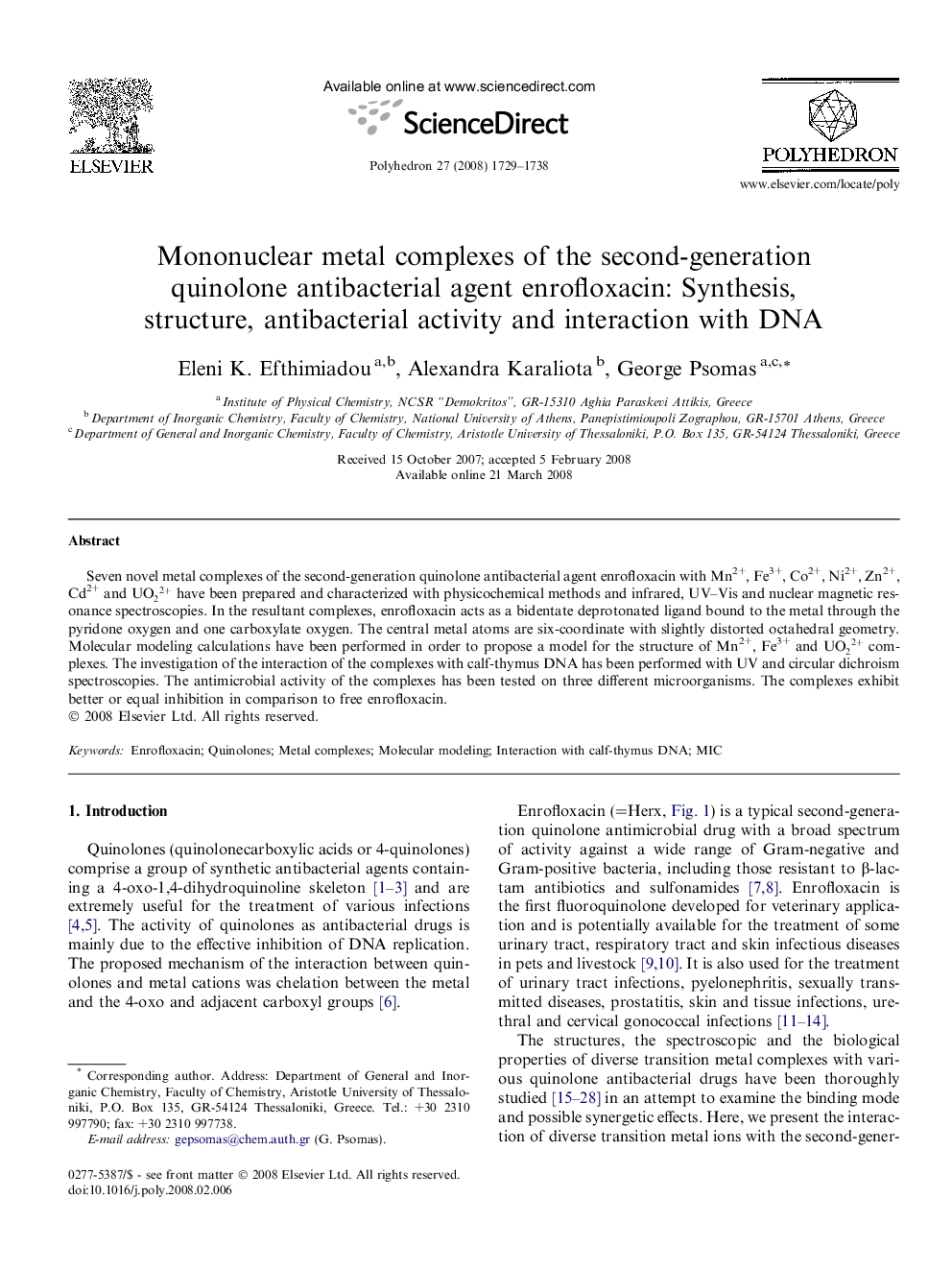| Article ID | Journal | Published Year | Pages | File Type |
|---|---|---|---|---|
| 1340481 | Polyhedron | 2008 | 10 Pages |
Seven novel metal complexes of the second-generation quinolone antibacterial agent enrofloxacin with Mn2+, Fe3+, Co2+, Ni2+, Zn2+, Cd2+ and UO22+ have been prepared and characterized with physicochemical methods and infrared, UV–Vis and nuclear magnetic resonance spectroscopies. In the resultant complexes, enrofloxacin acts as a bidentate deprotonated ligand bound to the metal through the pyridone oxygen and one carboxylate oxygen. The central metal atoms are six-coordinate with slightly distorted octahedral geometry. Molecular modeling calculations have been performed in order to propose a model for the structure of Mn2+, Fe3+ and UO22+ complexes. The investigation of the interaction of the complexes with calf-thymus DNA has been performed with UV and circular dichroism spectroscopies. The antimicrobial activity of the complexes has been tested on three different microorganisms. The complexes exhibit better or equal inhibition in comparison to free enrofloxacin.
Graphical abstractThe synthesis, the characterization, the antibacterial activity and the interaction with calf-thymus DNA of the novel mononuclear complexes of the second-generation quinolone antibacterial agent enrofloxacin with Mn2+, Fe3+, Co2+, Ni2+, Zn2+, Cd2+ and UO22+ are presented.Figure optionsDownload full-size imageDownload as PowerPoint slide
